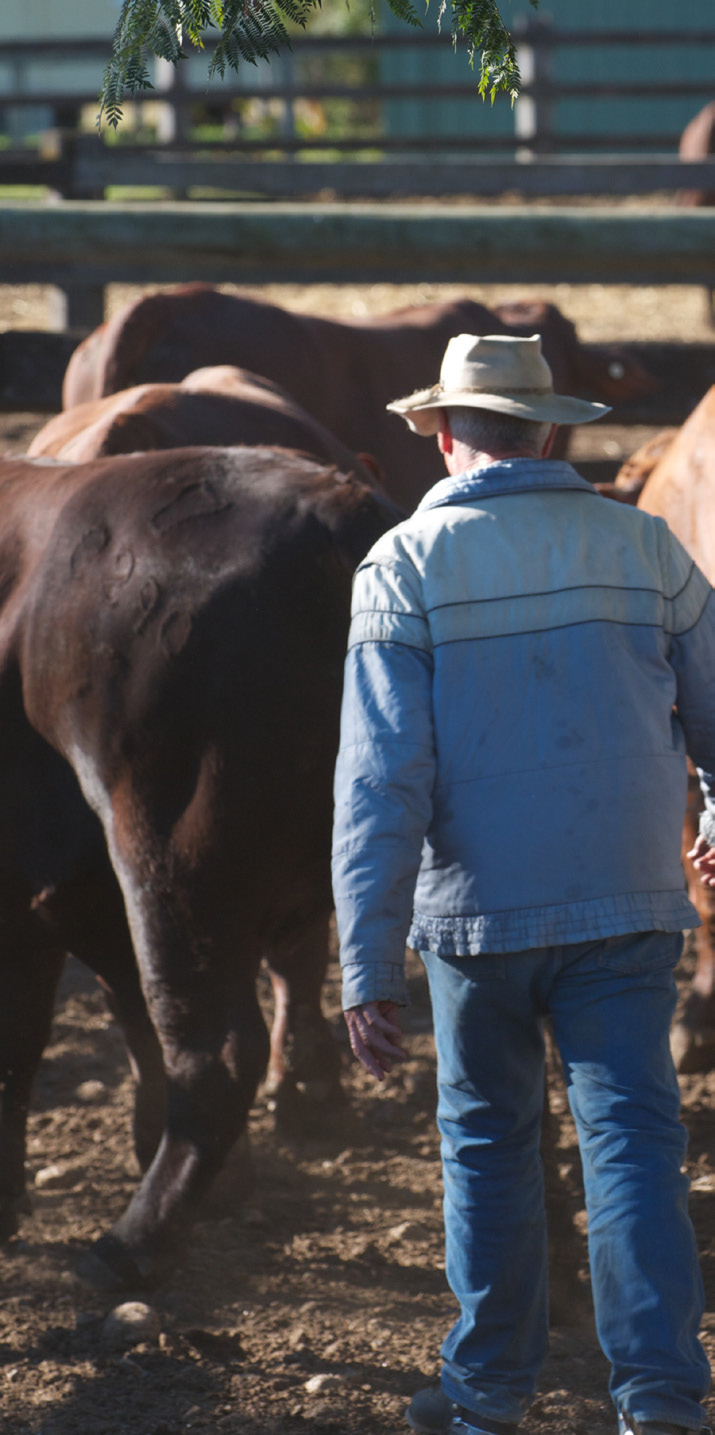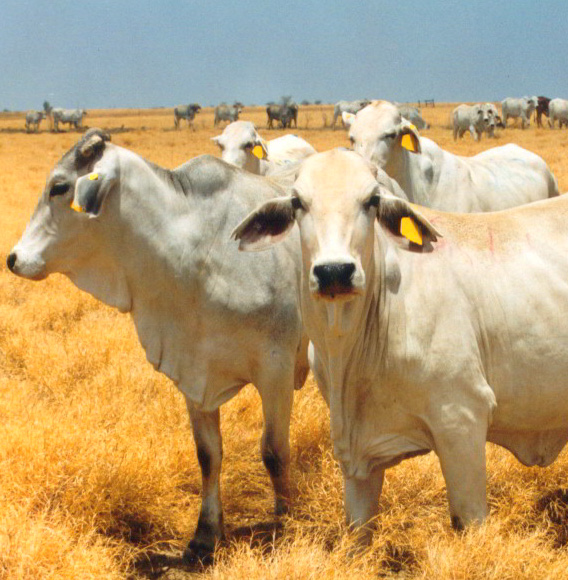Cattlecouncil.com.au


National Residue Survey 2012–13 Cattle
National Residue Survey 2012–13
Cattle
The program
The animal product program monitors the
The chemicals tested for in NRS animal product
residue status of Australian meat products in
monitoring include those that may be used
accordance with the maximum residue limits
in animal production in Australia, as well as
and contaminant levels set out in the Australia
those that may be important for international
New Zealand Food Standards Code.
trade. These include persistent chemicals such
The NRS animal product program fulfils the
as organochlorines that are no longer used in
requirements of the Australian Government
Department of Agriculture and the export
certification requirements of international
trading partners, ensuring Australia's
During 2012–13, a total of 5 925 samples were
market access. The program also supports
collected from cattle and analysed for residues
state and territory licensing of domestic
of veterinary drugs, animal treatments,
processing facilities and industry quality
agricultural chemicals and environmental
contaminants. The overall compliance rate
with relevant Australian Standards was
100 per cent.
NRS reviews the sampling plans annually
These results assure Australian and overseas
in close consultation with industry and
customers of the excellent residue and
the Department of Agriculture before final
contaminant status of Australian cattle.
approval. Sample collection rates are based on
The industry has shown a high degree of
production levels in Australia, or are directed
compliance with Australian Standards over the
by overseas market access requirements if the
past decade.
commodity is to be exported.
Animal products are sampled by authorised
Testing and traceback
government officers at export abattoirs and
If a sample is found to contain a residue
by quality control staff at domestic abattoirs.
above the Australian Standard, a traceback
The samples are sent from collection points at
investigation is undertaken to establish the
the abattoirs to a central receival and dispatch
cause. The responsible state or territory agency
facility within NRS, where they are sorted
then provides advice to the producer to prevent
into batches and sent to contract laboratories
recurrence. In more serious circumstances
for analysis.
regulatory action may also be taken.
The sampling is designed so that the
All traceback activities and findings are
probability of an abattoir being selected for
reported to NRS. This feedback to participating
random monitoring is proportional to the
industries is important in highlighting
commodity throughput of that abattoir (that is,
potential problems (such as inappropriate
the number of animals being slaughtered). NRS
chemical use) and improving on-farm
sends sample requests to abattoirs specifying
practices. Where appropriate, traceback
the date, the class of animal and the type of
information is also forwarded to industry and
sample required (meat, fat, liver, kidney or
government authorities for consideration.
urine). Animals for sampling are then selected
Traceback information may also be forwarded
at random along the slaughter chain.
to the Australian Pesticides and Veterinary
Medicines Authority for consideration during
its chemical review processes.
Chemicals Samples Compliance (%)
Veterinary drugs and animal treatments
Benzimidazoles and macrocyclic lactones
Aminoglycosides, anticoccidials,
antimicrobials, beta lactams,
cephalosporins, macrolides, phenicols,
Resorcyclic acid lactones, steroids,
Other Veterinary Drugs
Beta-agonists and non-steroidal
anti-inflammatory drugs
Agricultural chemicals, animal treatments and environmental contaminants
Fungicides, Herbicides
Benzoyl ureas, carbamates, fungicides,
herbicides, insecticides, organochlorines,
organophosphates, persistent
organic pol utants and pyrethroids
(ISO/IEC 17025:2005) and value for money.
Laboratories are proficiency tested by NRS
NRS has been accredited by the National
to ensure the validity of analytical results.
Association of Testing Authorities (NATA)
Current laboratory contracts began on
as a proficiency test provider since July
1 July 2011 and will run to 30 June 2014.
2005. The NRS proficiency testing system is
recognised within the laboratory community
as meeting internationally accepted standards
International maximum
(ISO/IEC 17043:2010) to establish the technical residue limits
competence of participating laboratories.
NRS maintains international maximum residue
Residue testing is conducted by several
limit tables for countries that are major export
laboratories under contract with NRS.
markets for Australian primary produce. These
Laboratories are selected through
tables can be found on the NRS website.
the Australian Government tendering
process on the basis of their proficiency,
accreditation against international standards

National Residue Survey 2012–13
The National Residue Survey
The National Residue Survey (NRS) is part of
an Australian Government and industry
strategy to minimise chemical residues and
environmental contaminants in Australian
food products and promote market access.
NRS residue monitoring programs support
Australia's food industry and primary
producers by confirming Australia's status as a
producer of clean food and facilitating access
to key export markets. NRS programs provide
confirmation of good agricultural practices,
help to identify potential residue problems,
and indicate where follow-up action is needed.
Residues can be present in food either through natural circumstances or as a consequence of agricultural or industrial activities. NRS contracts laboratories to analyse samples for residues of pesticides, veterinary medicines and environmental contaminants. Samples are collected from 21 animal products including meat, honey, eggs, wild-caught fish and aquaculture products; 21 grains, pulses and oilseeds; and six horticultural products including pome fruit, macadamia, onion, almond and citrus.
Originally established in 1961 following concerns about pesticide residues in exported meat, NRS is largely industry-funded through levies on participating animal and plant commodity producers. NRS testing includes random and targeted programs. All NRS programs are underpinned by an ISO 9001:2008 quality management system.
General enquiries
Phone 1800 420 919Fax (02) 6272 4023Email [email protected]
Postal addressNational Residue Survey GPO Box 858, Canberra ACT 2601 Australia
Source: http://www.cattlecouncil.com.au/assets/DAFF1149_1013_NRS_Cattle.pdf
ECUADOR DATASHEET LAST MODIFIED 22.05.2008 1. PRESHIPMENT INSPECTION (PSI) MANDATE: Corporación Aduanera Ecuatoriana (CAE) All goods shipped until and including February 29, 2008 shall be subject to PSI. NNRFs (Avisos de No Conformidad) shall be issued in case final documents are not received within 15 working days from the
Evolution of Blood Gas Analysis - Focusing on the Source of Impaired O2 Supply to the Tissue Ellis Jacobs, Ph.D, DABCC, FACB Associate Professor of Pathology, NYU School of Medicine Director of Pathology, Coler-Goldwater Hospital and Nursing Why measure blood gases Overview of acid-base disturbances Use of the Acid- Base Chart




